A Paradigm for HOA Governance: Strategies to Make Your Association More Functional
By: Helsing Admin
“Effective governance by a Board of Trustees is a relatively rare and unnatural act…trustees are often little more than high-powered, well-intentioned people engaged in low-level activities.”[ii] This very astute observation on governance applies just as well to The Board of Directors of Homeowners Associations – except too often we are even missing ‘high-powered” people, leaving the corporation (your association) with well-intended people engaged in low-level activities.
This is a typical model, and it rarely works well. (The return on investment of the board’s time is rarely rewarded in measures approximating the expectations equal to the investment of the board’s time.) My observation after a couple of decades in the community association management business is that the quickest way for a homeowners association to have their management fees increase is for the management company to get too much management assistance from the Board of Directors. Associations that function in this manner are terribly inefficient and unfortunately in the majority. Basically, they suffer from a lack of clarity as a consequence of board members taking on a part of the processes that deal with procedures and affecting the results. When a manager is guided or limited by the directions of the board, the experience of the manager and other experiences persons is offset by the need to follow a director’s instructions.
Why are Boards so dysfunctional? In the vast majority of cases it is because Board Members do not understand their role, and they have never been given any strategies or framework to guide them in carrying out the requirements of their role. ‘Simply put, the board exists (usually on someone else’s behalf) to be accountable that its organization works. The board is where all authority resides until some is given away (delegated) to others. This simple total authority-total accountability (within the law or other external authorities) is true of all boards that truly have governing authority.”[iii]
The policy governance model begins with the above premise and then develops other universal applicable principles so that any organization can build a structure that fits its needs and supports its functions. This is the first in a series of articles to explain these principles and offer the beginning of a model your association can use to improve the efficiency of its operations. In preparing these articles, I am also relying in great part on a model being produced by the California Association of Community Managers (CACM) to assist community association managers in applying the Policy Governance® model to their clients.
In order to become more effective in your role, Board members must make a paradigm shift and understand the Board’s role, the manager’s role, and how those roles inter-relate. The shift is one where Boards pay greater attention to the issues of purpose and direction to allow them to make strategic decisions. Boards must also empower management as much as they feel is safely possible, delegating what is appropriate and maintaining control over management activities as needed by clearly articulating the boundaries within which management must act.
The manager, in turn, must be able to make effective decisions based upon their specialized knowledge and expertise. However, these paradigm shifts need to happen in s way that resolves current uncertainties – including but not limited to unclear board expectations, over-lapping responsibilities between management and Board, adjusting to the personalities of new Board members, and much more.
The Policy Governance® Model uses a set of integrated principles to help Boards clearly establish the relationships, roles/responsibilities, and boundaries between the entities involved in he governance of any organization. In an HOA, the principles for effective governance define the involvement of homeowners, the board, the community manager, and the management staff in the governance and operation of the association. By following these principles the board insures that board focus remains on efforts determining the direction and the expected results for the association (based on the needs and interests of the homeowners), leaving it to the manager to determine, within clearly stated boundaries, how to use staff and other resources to achieve those results.
This starts with understanding the difference between governance and management. The following definitions come from CACM[iv] and form an excellent basis for Policy Governance® in community associations.
Governance: Setting standards and expectation that align with the owner’s wishes and interests focused on the big picture.
Management: Executing on the goals and directions set by the board, focusing on day-today and operational concerns.
Starting with these definitions we can from a Policy Governance® model to provide clarity on roles, to ensure the boards legal and fiduciary duties are accomplished, and improve accountability to homeowners through transparency and focus on long term goals.
Please continue with Part II – Governance Roles and Responsibilities.
The Policy Governance Series draws heavily on John Carver’s service marked endeavors and much of the Homeowner’s Association model relies on and is reproduced with permission from The California Association of Community managers (CACM)
Articles are for advertising and general information by The Helsing Group, Inc. They are not intended to provide legal advice, but rather reflect our opinions as Community Association managers and Consultants. Readers should not act on issues raised in our newsletters or websites without consulting legal counsel.
Copyright 2012
The Helsing Group, Inc.
All Rights Reserved
[i] Policy Governance ® is a registered service mark of Dr. John Carver. The authoritative website is www.policygovernance.com
[ii] Improving the performance of governing Boards, Chait, Holland, and Taylor, 1996
[iii] Carvers Policy Governance Model in Nonprofit Organizations by John and Miriam carver
[iv] California Association of Community Managers



